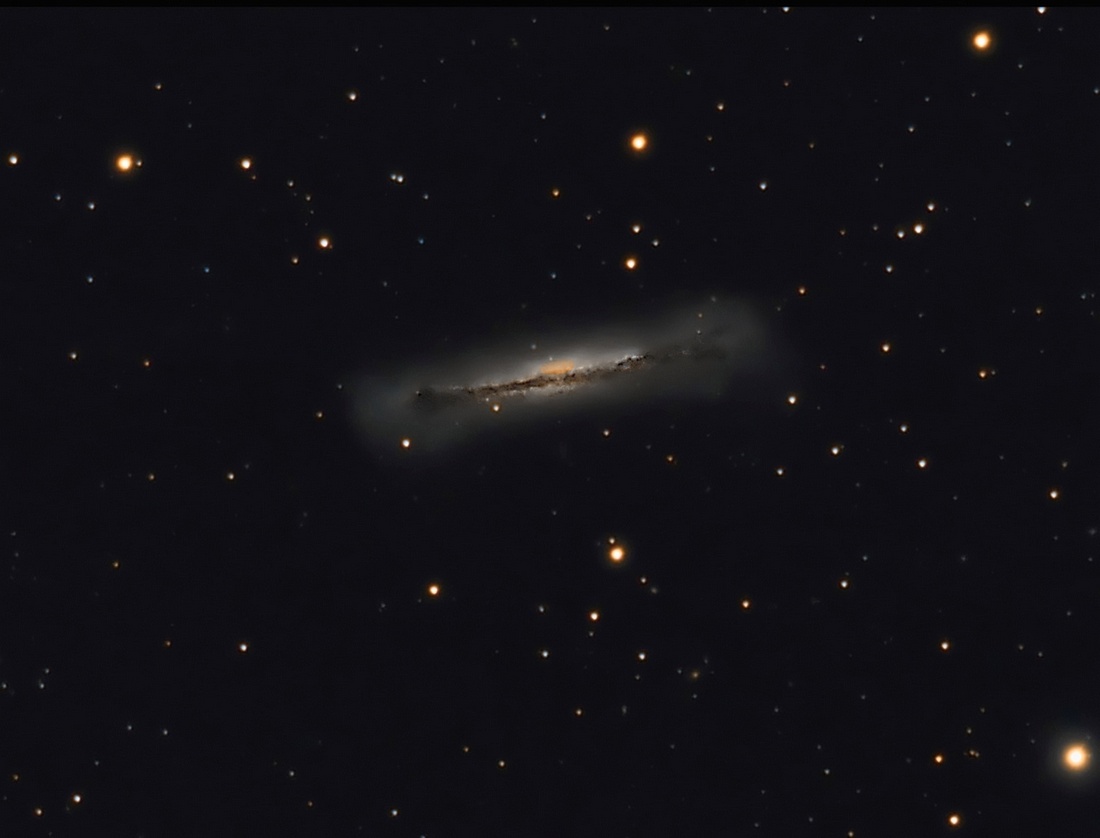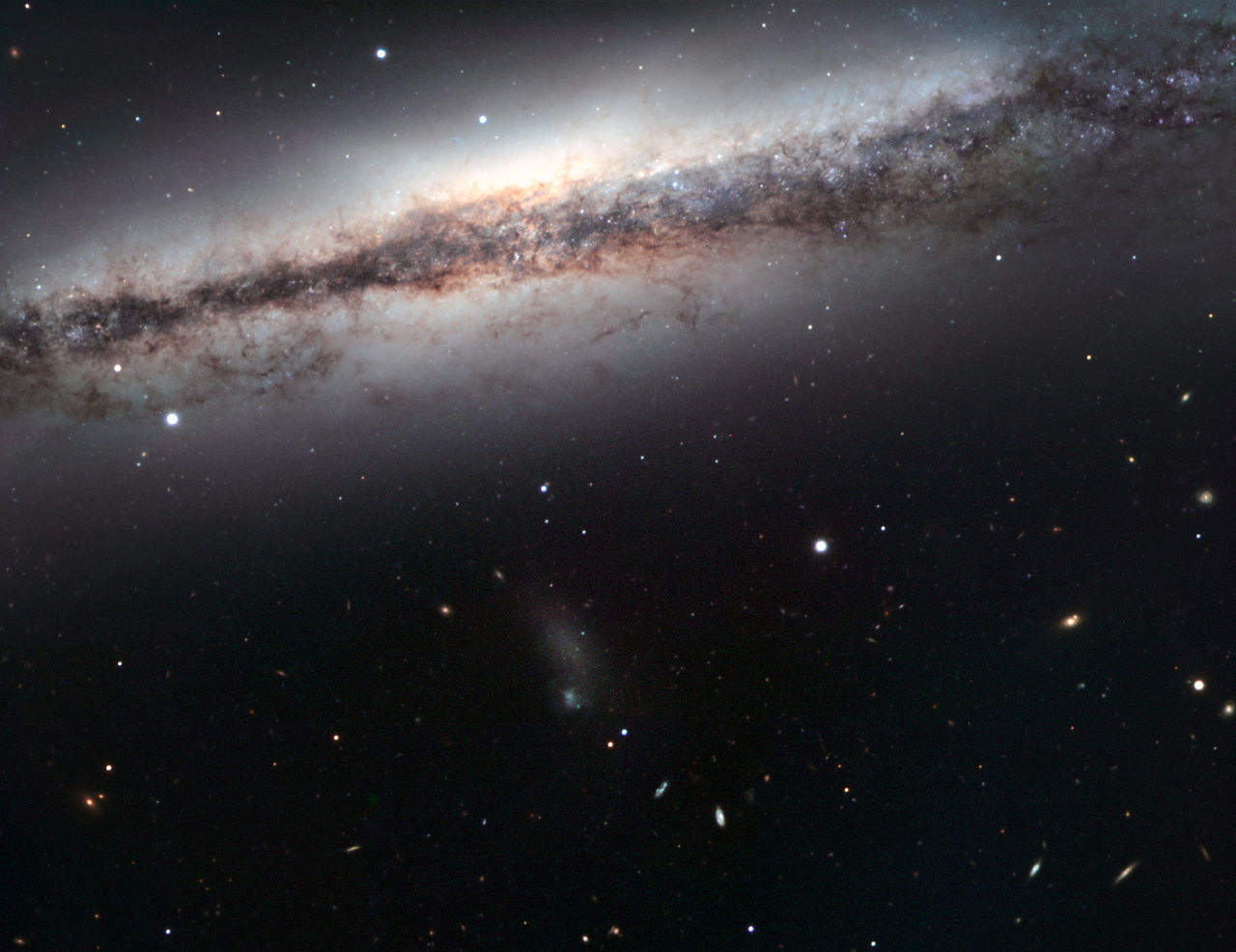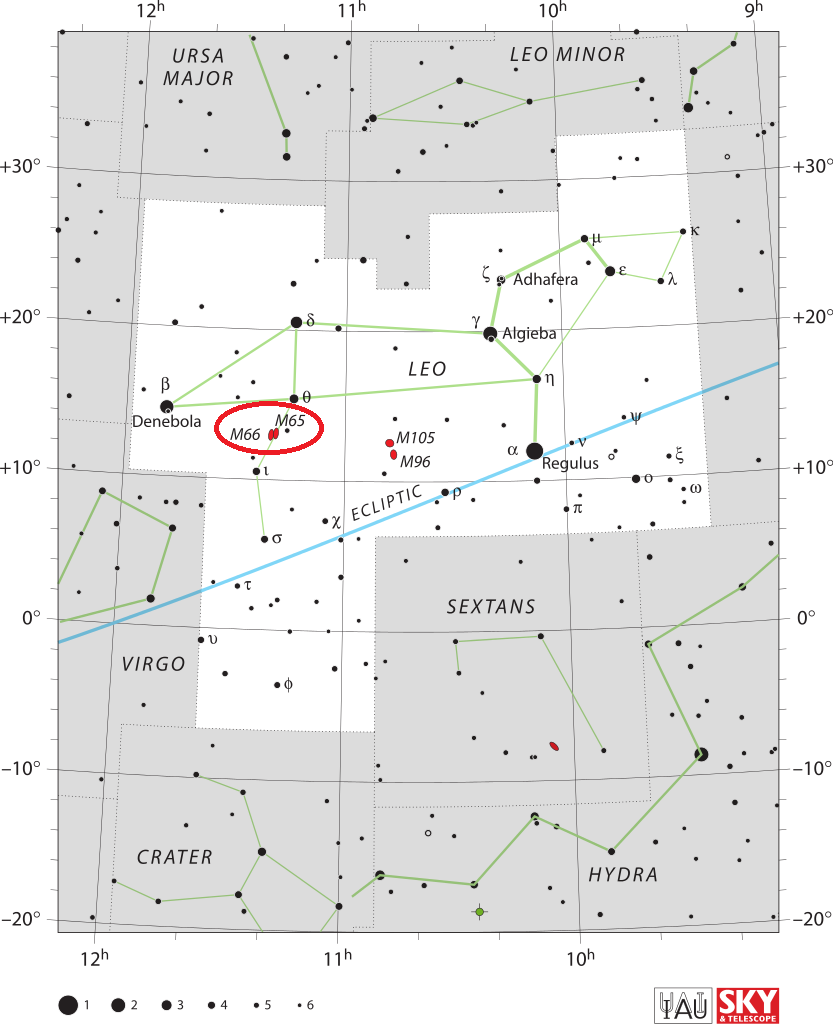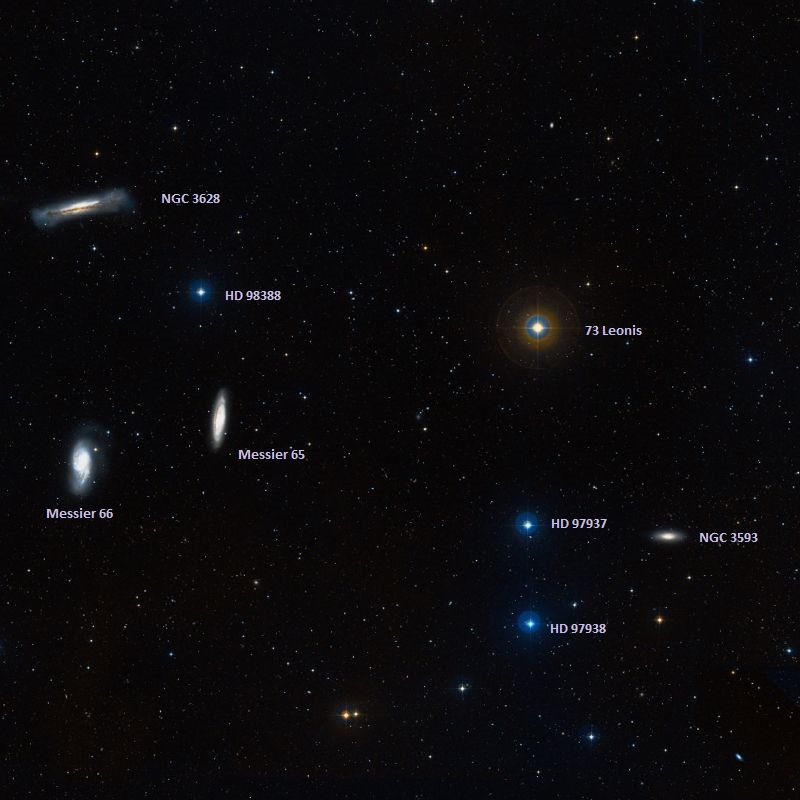NGC 3628, also known as the Hamburger Galaxy or Sarah’s Galaxy, is a famous unbarred spiral galaxy located in Leo constellation. The galaxy is about 100,000 light years across and occupies an area of 15 by 3.6 arcminutes of the apparent sky.
The Hamburger Galaxy can be found only 0.5 degrees to the north of the galaxy pair Messier 65 and Messier 66, between the relatively bright stars Theta and Iota Leonis. The Hamburger Galaxy has an apparent magnitude of 10.2 and lies at an approximate distance of 35 million light years from Earth.
NGC 3628 forms the famous Leo Triplet (M66 Group) with the spiral galaxies Messier 65 and Messier 66. It is the faintest member of the group and the only galaxy in the Leo Triplet that was not catalogued by Charles Messier. It went undetected by the French astronomer and was not discovered until the late 18th century. It was discovered by William Herschel in 1784. He catalogued it as H V.8 on April 8 of that year.
The Hamburger Galaxy is known for its broad equatorial band of dust and a vast tidal tail, spanning approximately 300,000 light years. The dust band obscures the galaxy’s central region and the bright young stars that have formed in its spiral arms.

Composed of young open star clusters and starburst regions, the galaxy’s tidal tail is believed to be a result of gravitational interaction with the other galaxies in the M66 Group. The stream of stars has been drawn out by tidal forces during violent encounters with the galaxy’s large neighbours. The interaction with M65 and M66 is also believed to be responsible for the warped disk of NGC 3628.
A spectroscopic analysis of the galaxy’s disk has revealed that the stars in NGC 3628 orbit in the opposite direction of the gas in the galaxy, likely as a result of a recent galactic merger.
The Hamburger Galaxy shares its name with Centaurus A, the fifth brightest galaxy in the sky, located in the constellation Centaurus.

The depth of the image reveals a myriad of galaxies of different shapes and colours, some of which lie much further away than NGC 3628. Particularly noticeable is the fuzzy blob just in the centre of the image, which is a diffuse satellite galaxy. A number of globular clusters can be seen as fuzzy reddish spots in the halo of the galaxy. Also visible as bright spots near the lower edge of the image (the two blue star-like objects below the satellite galaxy) are two quasars, the central engines of distant and very energetic galaxies, billions of light-years away. Image: ESO
FACTS
| Object: Galaxy |
| Type: Spiral |
| Class: SAb pec |
| Designations: NGC 3628, Sarah’s Galaxy, Hamburger Galaxy, PGC 34697, UGC 6350, VV 308b, 2E 1117.6+1351, 2MASX J11201701+1335221, IRAS F11176+1351, APG 317C, MCG+02-29-020, TC 163 |
| Features: Tidal tail, member of the Leo Triplet of galaxies |
| Constellation: Leo |
| Right ascension: 11h 20m 17s |
| Declination: +13°35’23” |
| Distance: 35 million light years |
| Apparent magnitude: 10.2 |
| Apparent dimensions: 15′ x 3′.6 |
| Redshift: 843 km/s |
LOCATION

